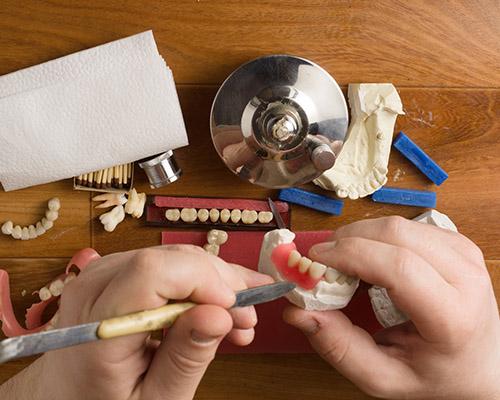In the world of dentistry, precision and reliability are everything. Whether it’s a crown, bridge, implant, or denture, even the smallest inaccuracy can lead to discomfort, improper function, or the need for costly remakes. For dental laboratories, this means that quality control (QC) is not just an operational process—it is the foundation of trust between labs, dentists, and patients.
Modern dental lab, often equipped with digital technologies like CAD/CAM, 3D printing, and AI-based design tools, still face the same core challenge: delivering consistent, high-quality restorations every time.
1. Why Quality Control Matters in Dental Labs
-
Accuracy impacts patient health – Poorly fitted restorations can cause bite problems, jaw pain, or long-term oral health issues.
-
Consistency builds reputation – Dentists rely on labs that deliver the same high standards case after case.
-
Cost efficiency – Avoiding remakes saves both the lab and the clinic time, resources, and money.
-
Compliance with standards – Many countries require dental labs to adhere to strict regulations (ISO, FDA, or local health authority guidelines).
Without strong QC protocols, labs risk losing clients and damaging patient outcomes.
2. Key Elements of Quality Control in Dental Labs
a) Material Quality Assurance
-
Use of certified, biocompatible materials is essential.
-
Tracking batch numbers of ceramics, alloys, resins, and zirconia ensures traceability.
-
Regular testing of strength, shade stability, and durability helps maintain standards.
b) Precision in Digital Workflows
-
Intraoral scans and CAD/CAM designs must be checked for accuracy before production.
-
Calibration of scanners, milling machines, and 3D printers ensures precision.
-
AI-driven error detection tools can flag irregularities in digital impressions.
c) Standardized Production Protocols
-
Strict Standard Operating Procedures (SOPs) help maintain uniformity across technicians.
-
Step-by-step checks at each stage (design, milling, finishing, and polishing).
-
Consistent shade-matching protocols for esthetic restorations.
d) Technician Training and Skill Development
-
Even with digital tools, human expertise is critical.
-
Regular training ensures technicians stay updated with new materials, equipment, and techniques.
-
Internal audits of technician work maintain accountability.
e) Final Inspection and Verification
-
Double-checking fit, occlusion, margins, and shade before dispatch.
-
Using microscopes and digital verification tools for high-accuracy checks.
-
Cross-verification by multiple technicians to reduce human bias.
3. Tools and Technologies Supporting QC
-
Digital Microscopy – For high-resolution inspections.
-
3D Scanning and Comparison Software – To compare the final product against the digital design or master model.
-
AI-powered QC Systems – Automated defect detection in digital impressions and restorations.
-
Barcode and Tracking Systems – Ensures traceability across workflows.
4. Common Quality Issues in Dental Labs
-
Fit inaccuracies due to scanner or milling calibration errors.
-
Shade mismatches, often caused by inconsistent lighting or lack of shade standardization.
-
Surface irregularities leading to patient discomfort.
-
Material defects when using low-quality or improperly handled materials.
Identifying these issues early prevents remakes and ensures patient satisfaction.
5. Establishing a Culture of Quality
Beyond systems and tools, true QC comes from a culture of excellence:
-
Encouraging technicians to treat every case as unique.
-
Promoting open communication between labs and dentists to clarify expectations.
-
Rewarding accuracy and precision within the team.
-
Implementing continuous improvement cycles (feedback → adjustment → monitoring → improvement).
6. The Future of Quality Control in Dental Labs
As digital dentistry evolves, QC will increasingly rely on advanced technologies:
-
AI-powered real-time monitoring of workflows.
-
Cloud-based case tracking with shared QC checkpoints between dentists and labs.
-
Predictive analytics to anticipate defects before they occur.
-
Robotics for consistent finishing and polishing.
These innovations will allow labs to achieve unprecedented accuracy and consistency, setting new industry standards.
Conclusion
Quality control in dental labs is not optional—it is essential. By ensuring accuracy, consistency, and compliance, QC safeguards patient health, strengthens dentist-lab relationships, and builds long-term trust.
With digital technologies and AI advancing rapidly, dental laboratories are moving toward an era where precision is not just maintained but continuously improved. In this future, quality control will remain the cornerstone of success, ensuring that every restoration that leaves the lab is a perfect fit for both the dentist and the patient.



